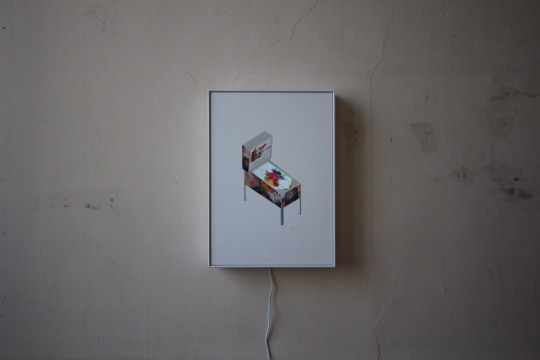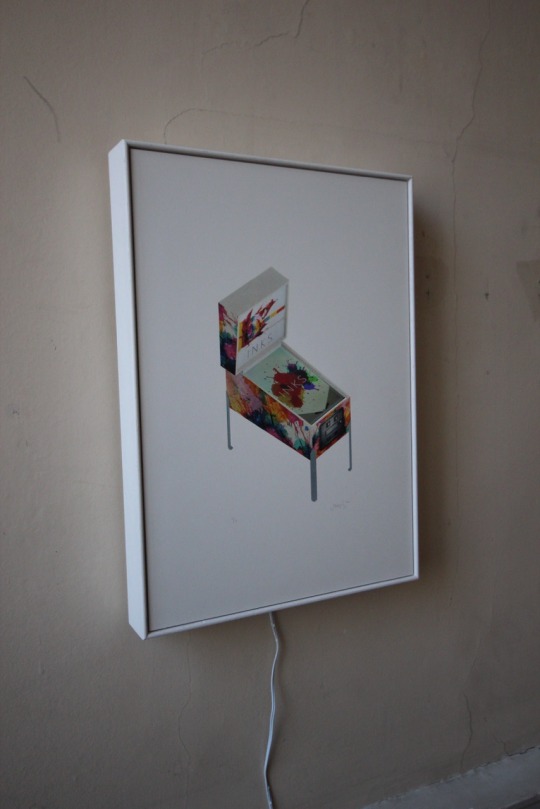I made a break through in the artwork. I've been in a bit of a creative block mode, struggling to get the art to the place I envisaged.
Yesterday when digitally sketching, everything seemed to click into place. It's a feeling I can't quite describe, but when working there is some sort of rush and excitement to keep chipping away the built up layers of creativity, with the months of testing and research all bursting, ready to flow out when everything comes together again.
 |
| Testing different possible layouts. The idea isn't to make final art, but to spark ideas. Quckly |
Heading in the right trajectory
As I left the studio at 6pm, I realised how much fun I had sketching. There has been somewhat amount of pressure I've been putting on myself about getting this right and also telling myself I need to remember to enjoy the process and go with it. When at the time there were some low point in terms of confidence, I think those moments were ultimately important to getting to this stage. Basically the creative process!
Of the ideas, the one that seemed to cause that spark was the trace lines or trajectory lines towards the main targets on the playfield. Originally I drew thin guides to line some other artwork ideas up, then I accidentally selected one and increased the thickness, and had one of those 'oh yeah, lets try that' moments. It's funny how things work out.
 |
| I'm really liking the effect around the logo at the bottom, through use of overprinting CMY(-K) colours. |
On Process colour (Cyan Magenta Yellow)
I chose to use process colours as this is solely what I have been using to print this year. Not that I'm boxing myself into only ever using process colours, but because I find it pleasing to have some correlation between my pinball machine and my
pinball prints in the final show.
CMYK is really a way of saving a bit of time and opening out flexibility in the final. Originally I thought I might have a simple two colour print, when my ideas started flowing, so did the colour count. Printing these colours individually would be a five colour job, if not more. As I don't require the black it's a three colour print using Cyan, Magenta, Yellow and the awesome overprinting effects as a designed outcome.
Revisit old ideas
I started to revisit ideas of visual style I had previously started to move away from, realising they were still relevant in my work. I've learned that this is a better way to approach; start by picking out pieces where I left them instead of leaving them to gather dust. I tend to push past projects away instead of pulling them close again.
 |
| When visiting family in Shetland, I revisited old prints and attended a makers market |
Revisiting these old prints reminded me one of the reasons I decided upon a printmaking course rather than a design course, its because I always turn to printmaking for 'creative relief' in my personal work, these are the things I do to fulfil my creative urges outside the commercial day job. Also I have lots of prints, please buy some! Email for a price list.
I always wanted the playfield artwork to be a reference to traditional pinball, but also incorporate my style particularly from earlier printmaking work prior to the MA.
Pick up where I left off
Picking up where I naturally left of using handmade methods to create effects and textures, I've found some ways to achieve these techniques digitally.
I really enjoy working out processes of how to do things, taking note of the steps to achieve a particular effect, then applying them multiple times under different circumstances. Although part of me strives to do these handmade, I have more flexibility with the end result working digitally. Also it's a lot faster.
 |
| Steps to achieve Noisy Gradients in Adobe Illustrator |
One of the techniques I developed with help from the internet is to create what I'm calling
Noisy Gradients
 |
| A section of the final art using the noisy gradient technique |
Partly, the noisy gradients are a reaction to not wanting to use a halftone. There's limitations in control the moire effect on a bigger, lower mesh count screen. And also limited by the space I have to lay the play field wood flat on the print bed, so my plan is to use only solid spot colour style in the final screenprint. The noisy gradients were also inspired to some classic pinball artwork.
On a role / never sleep
Upon getting home last night I just kept working, before long it was 4am and I was pretty much done. I've taken the ideas and concepts from the lines of trajectory and the visual style of different techniques and brought them together in something which really is beyond what I really have thought it could have been. Sounds quite emotional and it probably is cause I've not had enough sleep!
 |
| Final playfield artwork, ready for print (high res) |
There's a level of simplicity I had hoped to retain in large areas of solid colour, but also as you dive in more there are interesting areas of textures and abstract chaos that my instinct wanted to include.
Method in the madness
After lasercutting I was blown away by some of the interesting grain in the wood, and how almost naturally wraps itself around some of the insert cuts. It was unintentional and totally unique to the bit of wood. It made me realise there were areas of wood I wanted to leave unprinted, the use of white space and less is more, having some breathing areas, and also reminders of what the object is built from.
Speaking in terms of how the artwork applies to the actual pinball game. The basic concept is; where the ball travels towards a main target area, the art is quite linear, direct and flat, but after a target is made there are little pockets of explosions and chaos that will ensue in the artwork and in the game, which I plan will get more intense as you progress and the longer you play.
 |
| Mockup how it might look printed, although impossible to fully get a good idea till it's printed! |
Would it look different if I did it again?
Yes of course! And after I print and assemble the parts I will notice mistakes and changes I would to make, but it's at that time in the process where I need to stop - I've invested time and energy into it and believe that will shine through in the final work.
Although I'm a bit behind my ideal schedule, it's full steam ahead printing!















































